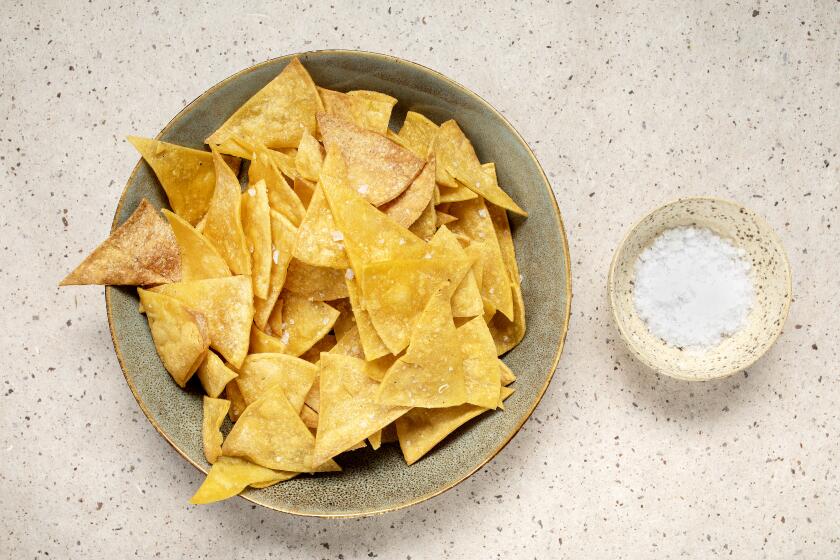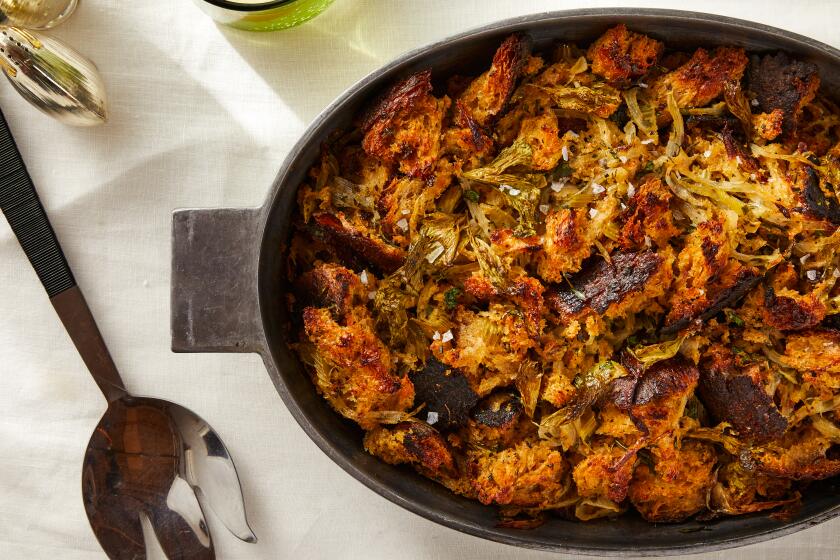Yeasted olive oil pastry

The noted French chef Careme pronounced the vegetable torte well and truly dead by the first part of the 19th century.
“Tortes are no longer fancy enough to appear on our opulent tables, for the simple reason that their form is too vulgar,” he wrote in “Treatise on Hot Entrees.” “Even the bourgeois class looks upon them with disdain, and will only eat hot pates and vol-au-vents, whereas in the past, important people were happy to begin their home-cooked meal with a modest torte.”
He may have jumped the gun. I don’t think I’ve ever gone to a Mediterranean country--France or anyplace else--and not come home with a new recipe for one of these savory pies.
Throughout the Mediterranean you find variations. Usually, they’re based on the same vegetable themes--greens of all kinds, winter or summer squash, leeks, eggplant, onions. What really distinguishes one country’s pies from another are the fine points, the flavorings, the cheeses and the crusts.
A winter squash torte from Provence, earthy with sage and surrounded by a bready olive oil crust, would never be mistaken for a Greek pumpkin torte, the filling redolent with mint and leeks, set between layers of crisp filo dough.
At the same time, a Greek pie of spinach or bitter greens will be fragrant with dill and packed with feta cheese, while its French or Italian cousin will have a more moderate amount of Gruyere and/or Parmesan, as well as garlic, thyme, rosemary and parsley.
Tortes take a little bit of time to make, but they are forgiving. And you can make them in steps. The order in which you do things isn’t that important--you can make part or all of a filling one day, and the crust another (or vice versa), and put it all together when you’re ready to bake.
Because they keep so well, they also can be made ahead, or frozen. If you do the whole thing, from start to finish, you’ll be working for about an hour, but none of the work will be that difficult. The yeasted olive oil crust is about the easiest pastry I’ve ever made.
Best of all, they’re big, dramatic and versatile. You can make them in a tart or springform pan, as a double-crusted torte, or you can make a more open-faced galette and bake it on a cookie sheet. They are meant to be served as a main dish, and they’re good hot or cold.
Tortes make great party fare, but they’re also a wonderful meal for the family; and leftovers pack easily into a lunchbox. This is one way I can get my 3 1/2-year-old to eat spinach. Of course, he hasn’t read Careme yet.
Dissolve the yeast in the water, add the sugar and allow to sit until the mixture is creamy, about 5 minutes. Beat in the egg and the olive oil. Combine 2 cups of the flour and the salt and stir into the yeast mixture. You can use a bowl and wooden spoon for this, or a mixer; combine the ingredients using the paddle, then switch to the dough hook. Work the dough until it comes together in a coherent mass, adding flour as necessary. The dough should be springy and not stick to your hands. Turn out onto a lightly floured surface and knead for a few minutes, adding flour as necessary, until the dough is smooth; do not overwork the dough. Shape into a ball. Place in a lightly oiled bowl, cover the dough tightly with plastic wrap and allow the dough to rise in a draft-free spot until doubled in size, about 1 hour.
Turn the dough out onto a lightly floured surface, gently knead a couple of times and cut into 2 equal pieces (or as directed in the recipe). Shape each piece into a ball. Cover the dough loosely with plastic wrap and let rest for 5 minutes, then roll out into thin rounds, as directed in the recipe, and line pans. If not using right away, freeze the dough to prevent it from rising and becoming too bready. The dough can be transferred directly from the freezer to the oven.
Get our Cooking newsletter.
Your roundup of inspiring recipes and kitchen tricks.
You may occasionally receive promotional content from the Los Angeles Times.















